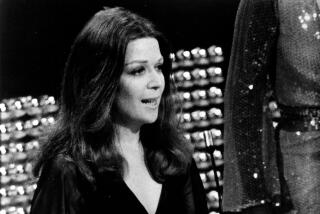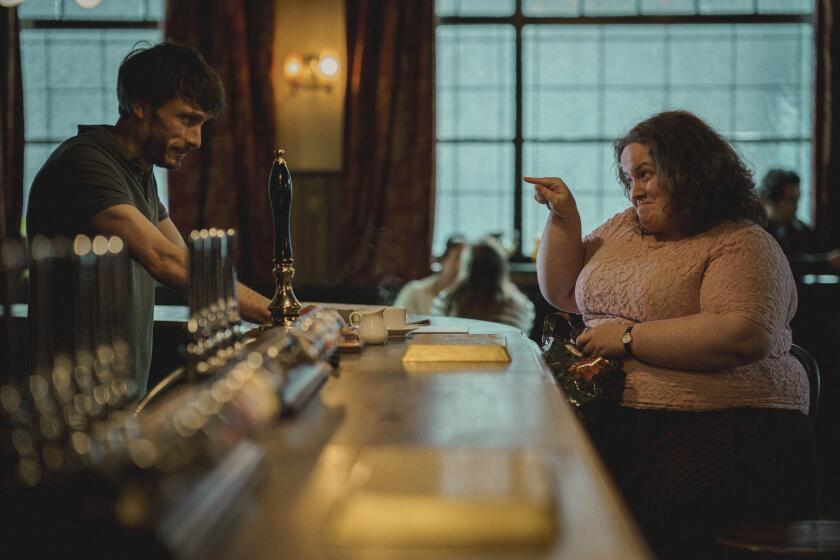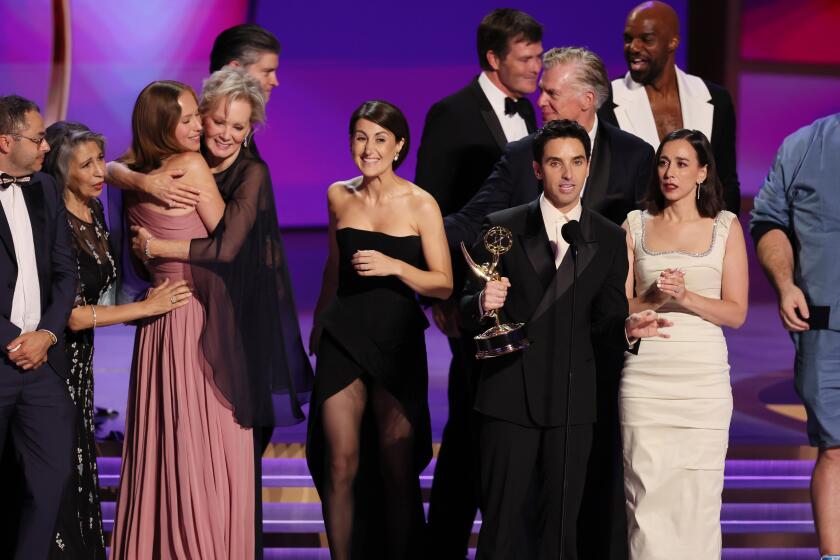A toxic chemical lurks on film sets. Is it poisoning the crews?
Veteran actor and stuntman Damien Puckler has jumped out of a moving car and into a brick wall, brawled with machete-wielding goons and leaped off the top of a five-story building.
In performing these and other stunts, Puckler takes care to ensure his own safety. But he never gave much thought to the small explosive squibs routinely affixed to him and other stuntmen to simulate the impact of bullets.
Now, however, an entertainment industry safety group is warning that many of these squibs contain particles of lead, creating a potentially hazardous toxic dust upon explosion.
“These bits, combined with the settled fume, can contaminate clothing, hair, furnishings, and even cameras and equipment,” according to a new report by Arts, Crafts & Theater Safety Inc., a nonprofit group that has consulted for clients such as the Smithsonian Institution and the Yale School of Drama. “This dust can expose the cast, crew, spectators and people occupying the space to lead.”
Monona Rossol, the report’s author, said she was prompted to study the issue after recently learning of the availability of lead-free varieties of squibs, which vary in shape and size but can resemble small firecrackers. She said the report was not financed by any outside group.
“It simply doesn’t make sense to use lead products in situations where cast, crew and even the public may be exposed,” wrote Rossol, who is a chemist and industrial hygienist. “It makes even less sense when there are alternative products that can accomplish the same effects.”
According to Rossol’s report, a single squib containing the explosive lead styphnate could expose people on sets to well above the allowed limit for the substance set by the Occupational Safety and Health Administration, the federal agency that regulates exposure to toxic chemicals in the workplace across such businesses as indoor gun ranges.
In one scenario outlined by Rossol, the detonation of a single lead squib in a 100-square-foot room could expose people in it to more than 20 times OSHA’s “permissible exposure limit” for the chemical. In another hypothetical situation laid out by Rossol, a single lead squib released in one meter of air could expose a person to 572 times OSHA’s “permissible exposure limit.” However, the report notes that “good ventilation, for example, could clear the fume” in a timely manner.
Peter Melton, a spokesman for the California Division of Occupational Safety and Health, said employers who use lead squibs are required to conduct air sampling tests to determine if their employees are “exposed above the action level or permissible exposure limit.”
Melton said that Cal/OSHA had not conducted an inspection in the entertainment industry related to the use of lead squibs. At the request of the Los Angeles Times, Cal/OSHA’s research and standards unit reviewed Rossol’s report.
“In our view, the article represents a worst-case scenario,” said Melton. “Cal/OSHA agrees that lead should be removed whenever possible so as not to unnecessarily expose workers. But the actual release of lead in the squibs has to be measured.”
Representatives of two industry trade groups, the Alliance of Motion Picture and Television Producers and SAG-AFTRA, which represents stunt performers, said they were reviewing Rossol’s report and had no immediate comment on her analysis.
“However, our member companies are always examining the safety practices throughout the industry in an effort to make work sites safer, and we will continue to do so,” said Jarryd Gonzales, a spokesman for the producers group.
The issue of lead poisoning is at the center of a growing controversy in Flint, Mich., where officials last year discovered high lead levels in water.
Lead exposure often goes unrecognized because there are no obvious symptoms -- but it can affect nearly every system in the body, according to the Centers for Disease Control and Prevention. Lead can cause permanent damage to children’s development and lead to lower intelligence quotients.
The National Institute for Occupational Safety and Health -- the arm of the CDC that researches work-related issues -- has not conducted any studies of the use of lead squibs on film and TV sets, according to spokeswoman Christina Spring. She also said that the agency has not been contacted by anyone in Hollywood who has voiced health concerns about the use of these devices.
Rossol’s report references D60-3 and D80-1 lead squibs made by De La Mare Engineering Inc., a San Fernando-based special-effects manufacturing company.
Brent Bell, the president of De La Mare, said that his company has been researching a non-lead replacement to the squibs it sells. Nonetheless, he stood by his existing lead-based product.
“Yes, there are concerns, and [Rossol’s] concerns are valid, and I have the same concerns,” said Bell. “What I mean is, workplace safety is important -- making sure our customers and users who are exposed to theatrical effects are protected. The professionals we sell to, they make things safe. They have to mitigate all kinds of hazards.”
Bell said that he felt it was “not fair” of Rossol to cite the extreme theoretical situation in which a person could be exposed to 572 times OSHA’s allowed limit for lead. He said that De La Mare’s lead squibs come with safety data sheets so that customers can properly use them. “Yes, you have to monitor,” he said. “Yes, you have to follow OSHA regulations.”
Bell said that “nearly every major film and TV studio” buys lead squibs from De La Mare, in addition to other non-lead special effects products it makes.
To conduct her study, Rossol -- a safety officer for Local 829 of the United Scenic Artists, International Alliance of Theatrical Stage Employees in New York -- did not test actual squibs for lead levels. Instead, she said her report was based on publicly available information from manufacturers about the chemical makeup of squibs commonly used in the industry.
While De La Mare’s product is widely distributed, it is not known how many productions use squibs containing lead. Film permits in Los Angeles indicate whether squibs are used on set, but not the type of squib.
There are several alternatives to squibs containing lead, including variants that rely on other chemicals or other means to detonate. For example, Pittsburgh-based Tolin FX makes and sells squibs that use air pressure to explode.
Puckler and another stuntman, Diamond Farnsworth, said they don’t believe many people in their industry know that some squibs contain lead.
“I’ve known about this and heard about this, but I bet you half the people in Hollywood couldn’t even tell you what a squib is made out of,” said Farnsworth, whose credits include “Ghostbusters” and “The Fugitive.”
But Puckler said that whenever squibs have been deployed on sets he’s worked on, safety professionals have ensured their proper use. “The lead thing is new to me,” said Puckler, whose credits include NBC’s “Grimm” and several films. “There always is a danger involved, no matter what you do.”
Some major productions are known to avoid lead squibs. For example, Farnsworth, who is the stunt coordinator for CBS’ “NCIS,” said that the long-running drama uses non-lead alternatives.
Puckler said he didn’t know which productions he’s worked on have used lead squibs. Still, he said he could imagine a scene such as a shootout in a warehouse in which it could be an issue.
“You will breathe in some of that stuff, for sure. I can’t deny that,” Puckler said. “I’ve been in those kinds of scenes.”
But in an industry that is cloaked in machismo, it’s not clear whether Rossol’s report will strike a chord. For his part, Farnsworth is skeptical that the use of lead squibs could affect a performer’s health.
“I’ve had thousands of squibs on me,” said Farnsworth, whose career spans roughly 50 years. “If anything was going to happen, it was going to happen by now.”
Twitter: @DanielNMiller
More to Read
From the Oscars to the Emmys.
Get the Envelope newsletter for exclusive awards season coverage, behind-the-scenes stories from the Envelope podcast and columnist Glenn Whipp’s must-read analysis.
You may occasionally receive promotional content from the Los Angeles Times.







